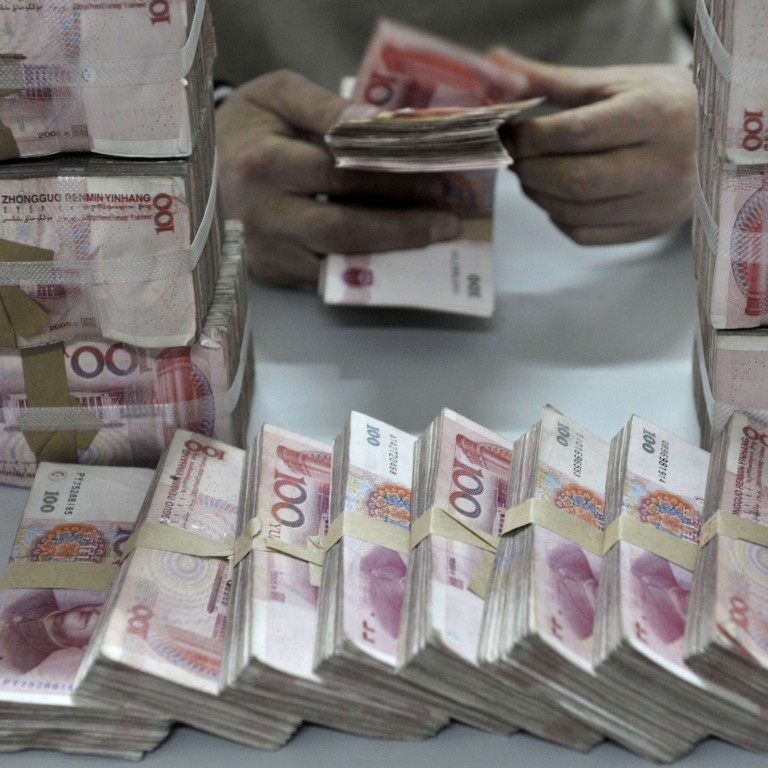
Cracks in China’s onshore credit market to widen on tighter leverage, slowdown risks
- Bonds with a total face value of 99 billion yuan became overdue in the first half, a 35 per cent jump from a year earlier: Wind Information
- Banking sources say lenders are trying to avoid writing new unsecured loans to indebted developers following official guidance
While the number of companies dropped from 19 a year earlier, the amount has surged, according to data compiled by Wind Information. Bonds with a total face value of 99 billion yuan became overdue in the January to June period, representing a 35 per cent jump.
China’s efforts to rein in the red-hot property market could intensify the problem in the coming months, analysts said. Following the “three red lines” guidance on corporate leverage last August, highly indebted developers continue to attract scrutiny as the nation’s economic rebound falters.

“We expect the number of defaults to jump in the next few months,” said Wang Feng, chairman of Shanghai-based financial services group Ye Lang Capital. “Real estate companies and some debt-ridden local state-owned enterprises (SOEs) are grappling with difficulties in managing their cash flows and are being closely watched.”
China’s gross domestic product probably grew by 8 per cent in the second quarter, according to the median estimate of forecasts tracked by Bloomberg, versus 18.3 per cent in the preceding quarter. The central bank will unleash more than 1 trillion yuan to ease a potential liquidity crunch from July 15, the same day the GDP report is due.
Authorities have sought to maintain market and social stability by managing the level of debt defaults by offering financial support to stressed SOEs, Wang said, in the run-up to the 100th anniversary of the Communist Party on July 1. That intervention will keep defaults from evolving into a crisis.

03:45
Exhibitions and history lessons: China prepares to mark 100 years of the Communist Party
Alvin Cheng, a fixed-income portfolio manager at Fidelity in Shanghai, said while chances of more delinquencies are rising, the state’s efforts to contain systemic risk in the financial system would help stabilise the bond market.
“A huge wave of bond defaults is unlikely to occur,” he added. “Market regulators have seen the risks and are trying to keep things under control.”
Since July last year, Beijing has sought to curtail excessive corporate leverage among developers to prevent a collapse in the real estate market. It has ordered banks to refrain from extending fresh credit to developers without adequate security.

Banking sources said major lenders are now heeding that call as they avoid writing new unsecured loans to indebted developers who have been facing several bouts of liquidity crunch.
China Evergrande Group, the mainland’s second-largest developer in terms of sales, had 670 billion yuan of borrowings at the end of 2020. It has become the lightning rod for criticism and the focus of regulatory clampdown to contain systemic risks.
China reported its first onshore bond default in March 2014 following a market-based reform, when Shanghai Chaori Solar Energy Science & Technology failed to repay creditors. Kaisa Group later became the first Chinese developer to skip payment on dollar-denominated bonds in 2015.
Policymakers in Beijing are eager to break the perception of implicit government guarantees in debt owed by some of the so-called too-big-to-fail entities. Peking University Founder Group, the business arm of the prestigious university, is undergoing a bankruptcy reorganisation with a US$11.3 billion bailout plan.
“The trend is that more defaults will take place in the future,” said Ivan, Li a fund manager at Shanghai-based Loyal Wealth Management. “Market regulators and local governments will resolutely step aside when a troubled corporate borrower meets difficulties to repay debts.”

